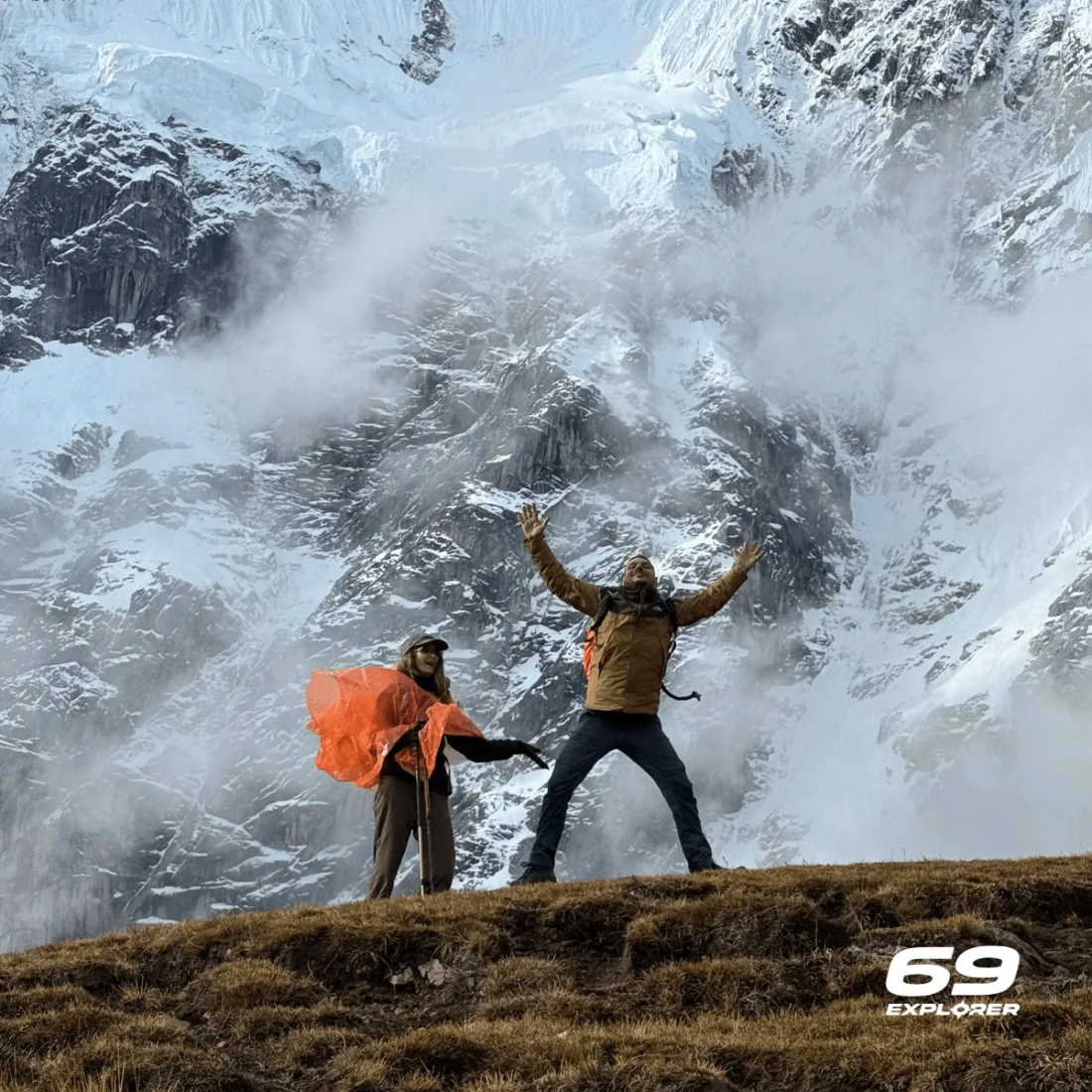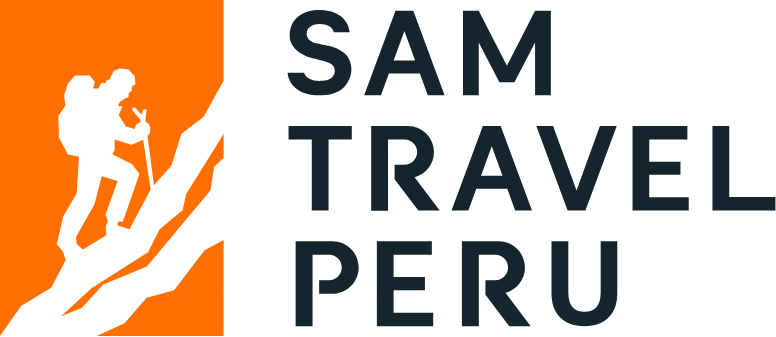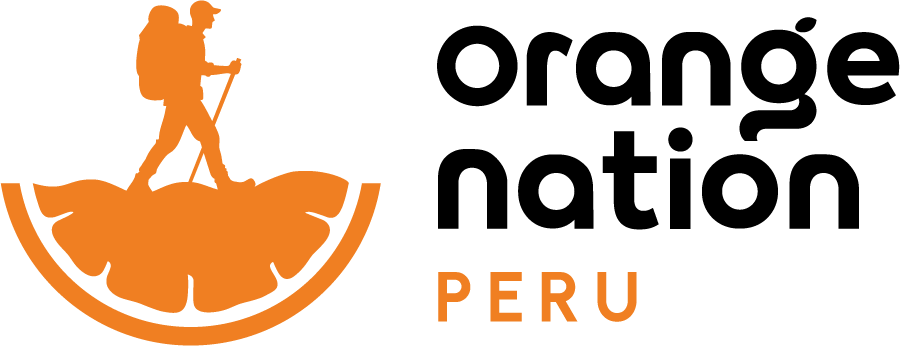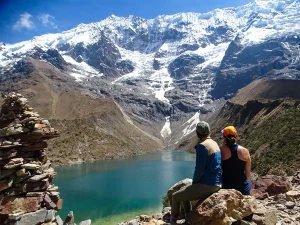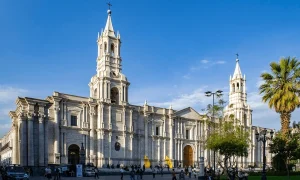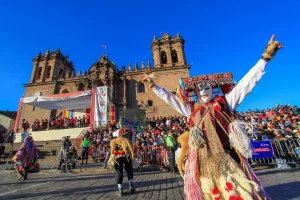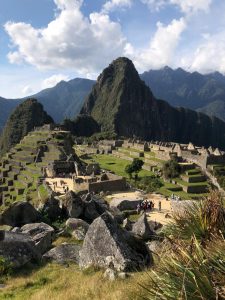You’ll hear a lot about the Inca Trail as the classic way to reach Machu Picchu, and yes, it’s iconic. But it also comes with heavy demand, limited permits, fixed dates and bigger crowds. If you want something more flexible and scenic, the Salkantay Trek is the natural alternative. No special permits, fewer people, and a route that moves from glaciers to high passes, cloud forest, and jungle before reaching the same legendary destination.
If Salkantay is on your list, here’s a breakdown of the 3, 4, and 5-day versions and which style fits your pace. Plus, a quick guide to the best companies running the trek in 2026.
3 vs 4 vs 5 Days: What Actually Changes
All versions cross the Salkantay Pass at 4,650 m, move through shifting ecosystems, and finish at Machu Picchu.
The big difference: how fast you want to move, and how much time you give yourself to acclimatize and recover.
Comparison at a Glance
| Option | Duration / Pace | Who It Suits / Pros & Cons |
|---|---|---|
| 3-Day | Fast, intense, very compact | Ideal for travelers with tight schedules. Covers the highlights but demands more per day. |
| 4-Day | Balanced but still intense | A full mountain-to-jungle experience in less time. Great if you want depth without committing to the classic 5-day. Less rest time. |
| 5-Day (Classic) | Gradual, relaxed, easier on the body | Best for acclimatization and enjoying scenery without rushing. More cultural and landscape immersion. |
- If you want a challenge: go for the 3-day option.
- If you want balance: go for the 4-day option.
- If you want comfort and time to adapt: go for the 5-day option.
Recommended Operators for the Salkantay Trek
These three companies consistently deliver good service, reliable logistics, and solid trekking experiences.
Sam Travel Peru
A strong option for travelers who want attentive service and a bit more comfort. They’re well-organized, flexible, and great for anyone trekking in the Andes for the first time. Their guides know the mountain well, which adds a layer of safety and confidence to the journey.
69 Explorer
Locally owned and experienced, with a good price-to-quality ratio. If you want something reliable without overspending, this is the sweet spot. They focus heavily on treks around Cusco and have earned a reputation for steady, consistent service.
Fun fact: they’re one of the few companies offering the 3-day version.
Orange Nation Peru
Great for travelers who like a little more “value per day”, nicer meals, thoughtful details, good camps or lodges and some cultural twists along the way. They tend to run more complete itineraries, not just the basic hike.
How These Operators Compare
| Company | What Stands Out |
|---|---|
| Sam Travel Peru | Flexible itineraries, attentive service, ideal for beginners |
| 69 Explorer | Best balance of price + reliability + local expertise |
| Orange Nation Peru | Extra touches: stronger logistics, better meal quality, comfortable camps |
Best Time to Do the Salkantay Trek & Who It’s For
When to Go
The dry season: May to September. It gives the best conditions: clearer skies, stable weather, and easier trails.
Who Salkantay Is Perfect For
- Those short on time but wanting a full experience go for the 3 or 4-day versions.
- Those wanting a smoother, more immersive journey go for the 5-day.
- Hikers who want fewer crowds and dramatic scenery go for the Salkantay Trek over the Inca Trail.
Because the route drops from high Andean passes into the jungle, it’s great if you love variety: snow-capped mountains, cloud forest, waterfalls, heat, and ruins all in one trip.
Final Thoughts
The Salkantay Trek isn’t a one-style-fits-all adventure. The 3-day is fast and challenging, the 4-day blends pace with depth, and the 5-day lets you breathe, adapt, and soak in the Andes at the right rhythm.
Whichever version you choose, going with a solid, experienced operator makes all the difference. For 2026, Sam Travel Peru, 69 Explorer, and Orange Nation Peru stand out for delivering well-organized, meaningful treks along one of Peru’s most stunning mountain routes.
Pro Traveler Tips
Yes. Spend 2 nights in Cusco (or any high-altitude city above 3,000 m) before your trek. This gives your body time to adjust and reduces the risk of altitude sickness.
It’s considered moderate to challenging. The highest point is the Salkantay Pass at ~4,650 m, so the altitude is often tougher than the distance. Good physical condition helps, but you don’t need to be an experienced trekker.
Bring layers — weather changes fast. Essentials include:
- Cash for small purchases along the trail
- Warm jacket for cold nights
- Rain jacket
- Breathable hiking clothes
- Hiking boots (broken in)
- Sun protection
- Reusable water bottle
- Snacks for long days
Technically yes, but not recommended. The route is long, remote in sections, and weather can change quickly. A good company provides safety, logistics, meals, and a guide who knows how to respond to altitude-related issues.
Most companies provide comfortable domes or tented camps with dining tents, sleeping mats, and hot meals. Some offer heated domes or lodges depending on the package.
Your team will provide filtered or boiled water daily. It’s wise to refill every morning and after lunch.
Yes. All Salkantay treks end in Machu Picchu. Your company handles entrance tickets, trains, the shuttle bus, and the guided tour. Make sure to ask if Huayna Picchu or Machu Picchu Mountain can be added.

